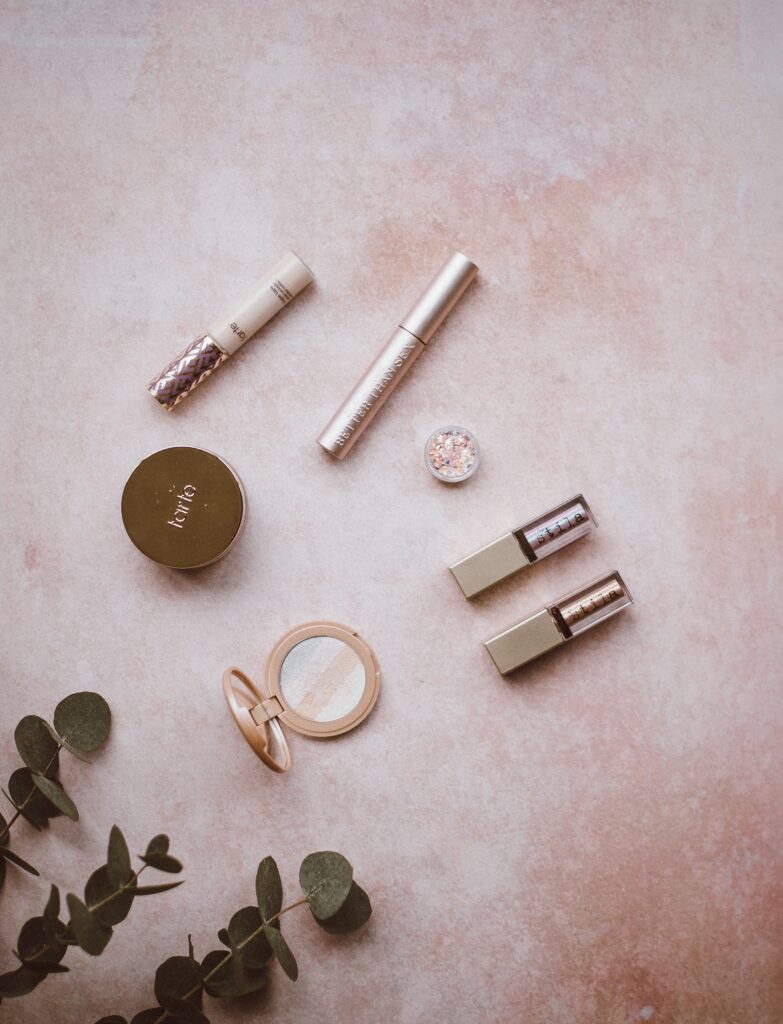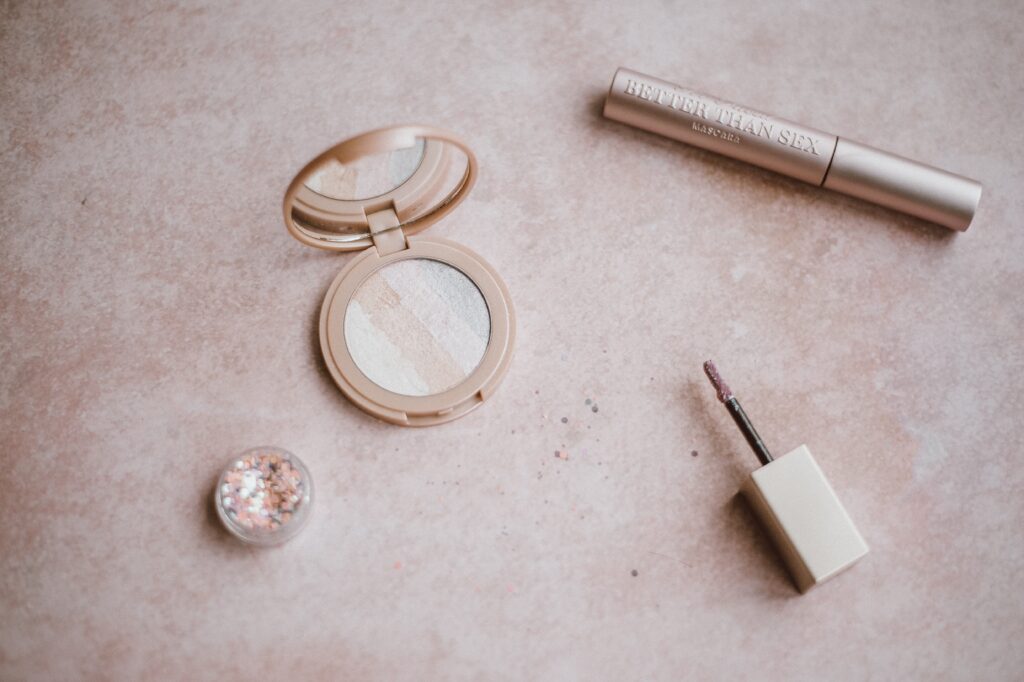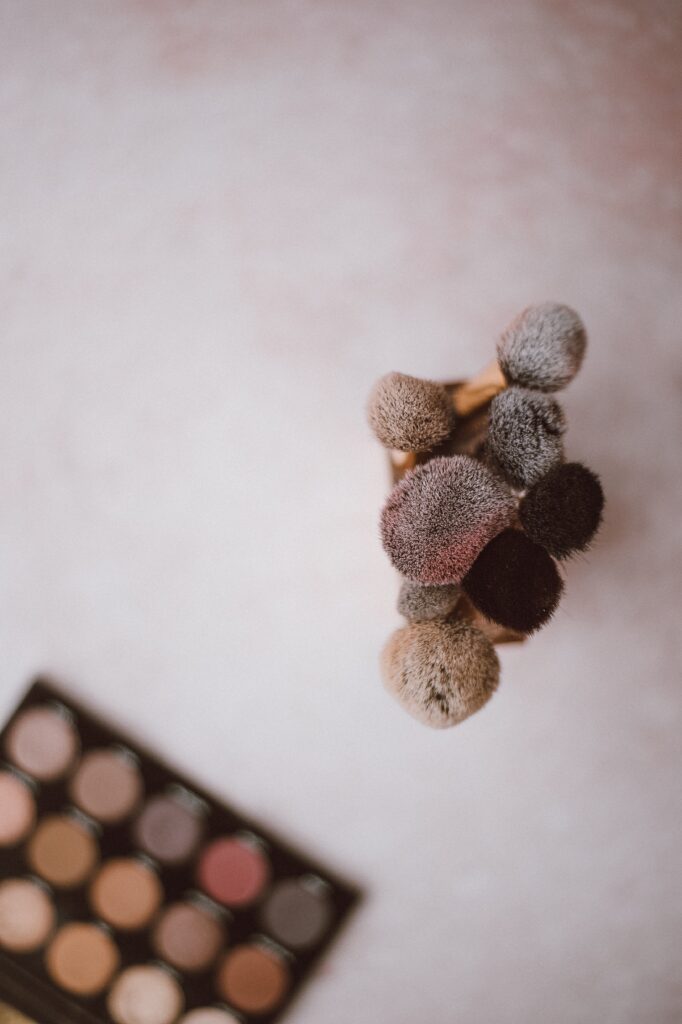Have you ever wondered what the purpose of a makeup primer is and whether or not you actually need one? Well, look no further, because we’re here to shed some light on this beauty essential. A makeup primer serves as a base for your foundation, helping to create a smooth canvas and ensure a flawless application. It also helps to minimize the appearance of pores, reduce oiliness, and increase the longevity of your makeup. Whether you’re a makeup enthusiast or a minimalist, understanding the purpose of a primer will undoubtedly enhance your beauty routine. So, let’s dive in and explore why a makeup primer might just be the missing piece in your makeup bag.

This image is property of images.unsplash.com.
What is a makeup primer?
Definition of a makeup primer
A makeup primer is a cosmetic product that is applied to the skin before applying foundation or other makeup products. It acts as a base to smooth out the skin’s surface, create a long-lasting makeup look, minimize the appearance of pores and fine lines, improve the application of makeup, and meet specific makeup needs.
Types of makeup primers
There are various types of makeup primers available in the market, catering to different skin types and concerns. Some common types include:
-
Silicone-based primers: These primers create a smooth and flawless base by filling in pores and fine lines. They often have a silky texture and help to extend the wear of makeup.
-
Water-based primers: These are lightweight and suitable for oily or acne-prone skin. They provide hydration without adding excess oil to the skin.
-
Color-correcting primers: These primers come in a range of colors to counteract specific skin concerns. For example, green primers can neutralize redness, while purple primers can brighten dull skin.
-
Illuminating primers: These primers contain light-reflecting particles that give the skin a radiant glow. They are perfect for achieving a dewy or strobe-like makeup look.
Common ingredients in makeup primers
Makeup primers often contain a combination of ingredients that provide various benefits. Some common ingredients found in makeup primers include:
-
Dimethicone: This silicone-based ingredient helps to create a smooth and even surface by filling in pores and fine lines.
-
Glycerin: Glycerin is a hydrating ingredient that helps to lock in moisture, keeping the skin plump and smooth.
-
Aloe vera: Aloe vera has soothing properties and can calm irritated skin, making it suitable for sensitive skin types.
-
Vitamin E: Vitamin E is an antioxidant that helps to protect the skin from environmental damage and keep it healthy.
-
Hyaluronic acid: This ingredient is known for its hydrating properties, attracting moisture to the skin and plumping it up.
The purpose of a makeup primer
Creating a smooth canvas
One of the main purposes of a makeup primer is to create a smooth and even canvas for makeup application. Primers help to fill in pores and fine lines, blurring their appearance and creating a flawless base. This allows foundation and other makeup products to glide on smoothly and evenly, resulting in a more polished and professional-looking finish.
Helping makeup last longer
Another key benefit of using a makeup primer is that it helps to prolong the wear of makeup. Primers create a barrier between the skin and makeup, preventing the products from being absorbed into the skin and ensuring they stay in place throughout the day. This is particularly beneficial for those with oily skin or in hot and humid climates where makeup tends to slide off easily.
Minimizing the appearance of pores and fine lines
Many people struggle with visible pores and fine lines on their skin. A makeup primer can help to minimize the appearance of these imperfections by filling them in and creating a smoother surface. By blurring the look of pores and fine lines, primers provide a more even and refined canvas for makeup application.
Improving makeup application
Using a makeup primer not only helps to create a smooth base for makeup, but it also improves the application of other products. When applied on top of a primer, foundation, concealer, and powder glide on effortlessly, making the blending process easier. This results in a more seamless and natural-looking makeup application.
Providing a base for specific makeup needs
In addition to the general benefits, makeup primers can also cater to specific makeup needs. For example, there are primers available that target redness, dullness, or uneven skin tone. These specialized primers contain color-correcting pigments that help to neutralize specific skin concerns and create a more balanced and even complexion.

This image is property of images.unsplash.com.
Do I need a makeup primer?
Considerations for different skin types
When determining whether you need a makeup primer or not, it’s important to consider your skin type. If you have oily skin, a primer can help control excess oil and keep your makeup in place. For those with dry skin, a hydrating primer can provide additional moisture and prevent makeup from clinging to dry patches. Combination skin can benefit from a primer that balances oiliness in the T-zone while hydrating drier areas.
Benefits for specific makeup looks
Makeup primers are especially beneficial for specific makeup looks. If you want a flawless and long-lasting base for special occasions or photography, a primer can ensure your makeup stays put and looks intact throughout the day. Primers with illuminating properties are perfect for achieving a radiant and dewy finish, while mattifying primers are ideal for those who prefer a matte and shine-free makeup look.
Personal preference and experimentation
Ultimately, the need for a makeup primer is a personal choice. While some people swear by them and consider them an essential step in their makeup routine, others find that they can achieve their desired results without using a primer. It’s always a good idea to experiment with different primers and see how they work for your skin and makeup preferences.
How to choose the right makeup primer
Matching primer to skin type
Choosing a makeup primer that is suitable for your skin type is crucial to achieve the best results. If you have oily skin, look for oil-absorbing or mattifying primers that help control shine. Dry skin types can benefit from hydrating and moisturizing primers. Combination skin may require a primer that balances oiliness in certain areas while providing hydration in others.
Considering specific skin concerns
If you have specific skincare concerns, such as redness, uneven skin tone, or large pores, consider using a color-correcting or pore-minimizing primer. Color-correcting primers help neutralize discoloration, while pore-minimizing primers can smooth out the appearance of pores. Be sure to choose a primer that addresses your specific concerns.
Choosing a primer based on desired makeup finish
The finish you want to achieve with your makeup can also influence your choice of primer. If you prefer a radiant and glowing finish, opt for an illuminating primer that contains light-reflecting particles. For a matte and poreless look, a mattifying primer can help control shine and create a smoother appearance. Consider your desired makeup finish when selecting a primer.
Testing and swatching primers
Before investing in a full-size primer, it’s advisable to test and swatch different options to find the right one for you. Many beauty retailers offer samples or testers that allow you to try out a product before committing to a purchase. Apply a small amount of primer to a clean area of your skin and observe how it feels and whether it enhances the appearance of your foundation and other makeup products.

This image is property of images.unsplash.com.
Application techniques for makeup primers
Using fingers
Using your fingers to apply a makeup primer is a common technique. Start by dispensing a small amount of primer onto your fingertips and gently pat and massage it into your skin. Ensure that the primer is evenly distributed and blended all over your face, focusing on areas that require extra attention, such as the T-zone or areas with large pores.
Applying with a brush
Using a brush to apply a makeup primer can provide a more precise application. Choose a synthetic brush with densely packed bristles for best results. Pump a small amount of primer onto the back of your hand and dip the brush into the product. Then, apply the primer onto your face, using gentle strokes and blending it into the skin.
Using a beauty sponge
A beauty sponge can also be used to apply a makeup primer. Dampen the sponge with water and squeeze out any excess moisture. Dot the primer onto your face, focusing on areas where you want to smooth out texture or minimize the appearance of pores. Gently bounce and press the sponge onto your skin to distribute and blend the primer.
Specific techniques for different primers
Certain primers may require specific techniques for optimal results. For example, color-correcting primers should be applied in thin layers and blended carefully to achieve an even skin tone. Illuminating primers can be applied all over the face for an overall glow or strategically on specific areas for a targeted highlight. Read the instructions or recommendations provided by the brand for the best application techniques.
Common misconceptions about makeup primers
Primer as a substitute for skincare
One common misconception about makeup primers is that they can replace skincare products. While primers provide cosmetic benefits and create a smooth base for makeup, they do not offer the same nourishing and protective properties as skincare products. It’s important to maintain a proper skincare routine alongside using a makeup primer to keep your skin healthy and well-hydrated.
Primer for all-day shine control
While many primers claim to offer all-day shine control, it’s important to note that their effectiveness may vary depending on factors like skin type and climate. Oily skin types may require additional touch-ups throughout the day, even with a matte primer. Setting powders or blotting papers can be used in conjunction with a primer to control shine and prolong the wear of makeup.
One-size-fits-all primers
There is no one-size-fits-all primer that works for everyone, as individuals have different skin types, concerns, and preferences. It’s important to choose a primer that matches your specific needs and desired outcome. What works for one person may not necessarily work for another, so it’s worth experimenting with different primers to find the one that suits you best.
Tips for using makeup primers effectively
Prepping the skin before primer application
To ensure optimal results, it’s essential to properly prep your skin before applying a makeup primer. Start by cleansing your face to remove any dirt, oil, or residues. Follow with a toner to balance the pH level of your skin. Apply a lightweight moisturizer to hydrate your skin and create a smooth base for the primer. Let the moisturizer fully absorb before applying the primer.
Allowing proper drying time
After applying the primer, it’s important to allow it to dry properly before moving on to the next step of your makeup routine. This typically takes a minute or two, but it’s worth waiting a little longer, especially if you have oily or combination skin. Once the primer has dried, you can continue with foundation, concealer, and other makeup products.
Layering products correctly
Layering products correctly is essential to achieve the best results with makeup primers. After the primer has dried, apply your foundation, starting from the center of your face and blending outwards. If necessary, use a setting powder or spray to lock in your makeup and prolong its wear. Remember to pat or press the products lightly into the skin to avoid disturbing the primer underneath.
Using primer for targeted areas
You don’t have to apply a makeup primer all over your face if you only require it in specific areas. For example, if you have enlarged pores on your cheeks but not on your forehead, focus the primer on the areas that need extra help. This allows you to maximize the benefits of the primer while minimizing its usage, making it last longer.
Alternatives to traditional makeup primers
Using moisturizers as primers
If you prefer a more minimalistic approach or have sensitive skin, using a moisturizer as a primer can be an alternative option. Look for lightweight and fast-absorbing moisturizers that can provide hydration and create a smooth base for makeup. Make sure the moisturizer is suitable for your skin type and won’t cause any adverse reactions.
Choosing silicone-free primers
Some individuals may prefer to avoid silicone-based primers due to personal preferences or concerns about their effects on the skin. Silicone-free primers are available in the market and provide similar benefits without the use of silicone-based ingredients. These primers often contain natural or plant-based ingredients and can be a suitable alternative for those who prefer a silicone-free option.
DIY options for natural makeup primers
For those who enjoy DIY projects or prefer natural ingredients, making your own makeup primer can be an option. Common ingredients used in DIY primers include aloe vera gel, glycerin, green tea extract, or even certain oils like jojoba or argan oil. However, it’s important to research and educate yourself on proper formulations and consider any potential allergens or sensitivities before attempting to create a homemade primer.
Common mistakes to avoid when using makeup primers
Using too much or too little primer
Using the right amount of primer is crucial for achieving the desired results. Applying too much primer can create a thick and heavy layer, making it difficult for other makeup products to adhere properly. On the other hand, applying too little primer may not provide the desired smoothing or longevity effect. Start with a pea-sized amount of primer and adjust as needed based on your personal preference.
Applying primer on unclean or unmoisturized skin
Make sure your skin is clean and moisturized before applying a makeup primer. If the skin is dirty or has remnants of skincare products, the primer may not adhere properly, affecting its performance. Additionally, applying a primer on dry and unmoisturized skin can exacerbate any dryness or flakiness. Cleanse, tone, and moisturize your skin before applying the primer to achieve the best results.
Not blending the primer properly
One of the most common mistakes when using a makeup primer is not blending it properly into the skin. It’s essential to evenly distribute the primer and ensure it is seamlessly blended to create a smooth and even base. Take your time to massage the primer into your skin using gentle circular motions or patting techniques to ensure it is fully absorbed and integrated into the skin.
Conclusion
Understanding the purpose and benefits of makeup primers is essential in determining whether you need one in your makeup routine. Primers help to create a smooth canvas, prolong the wear of makeup, minimize the appearance of pores and fine lines, improve makeup application, and cater to specific makeup needs. Consider your skin type, desired makeup finish, and personal preferences when choosing a primer, and don’t be afraid to experiment with different options. Use the provided tips and techniques for effective primer application, and avoid common mistakes to achieve the best results. Whether you decide to embrace traditional makeup primers, explore alternative options, or even create your own DIY version, remember that it’s all about finding what works best for you and enhances your overall makeup experience.
